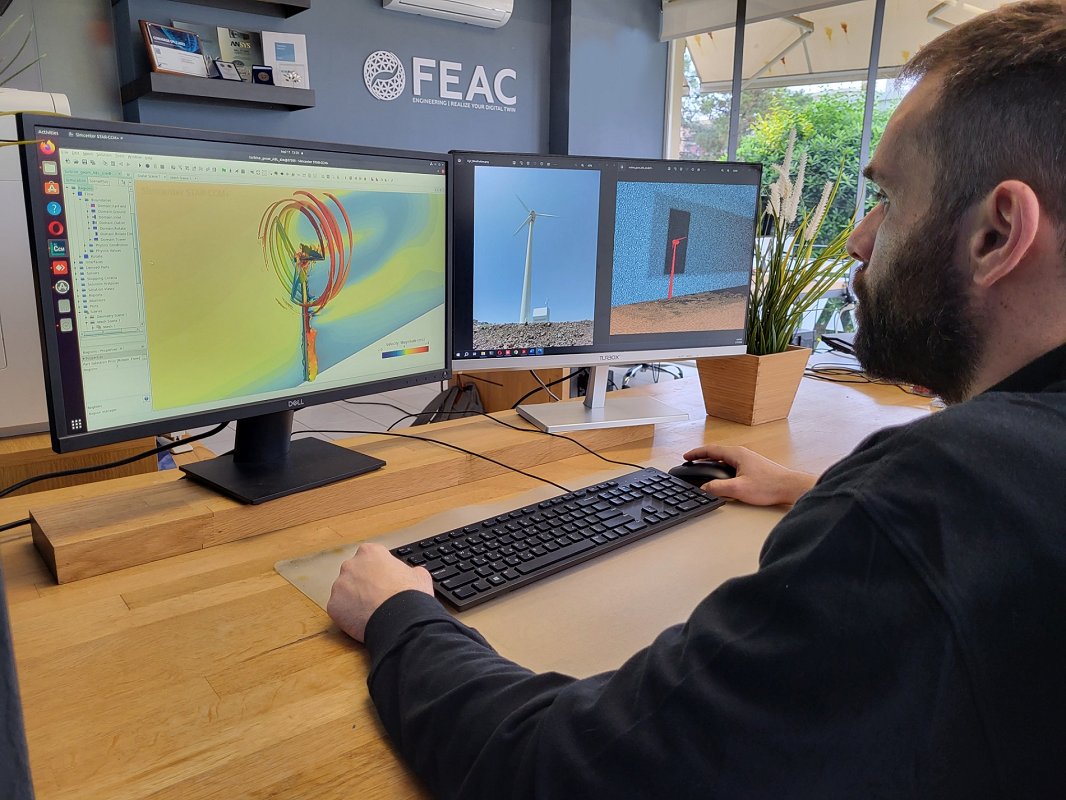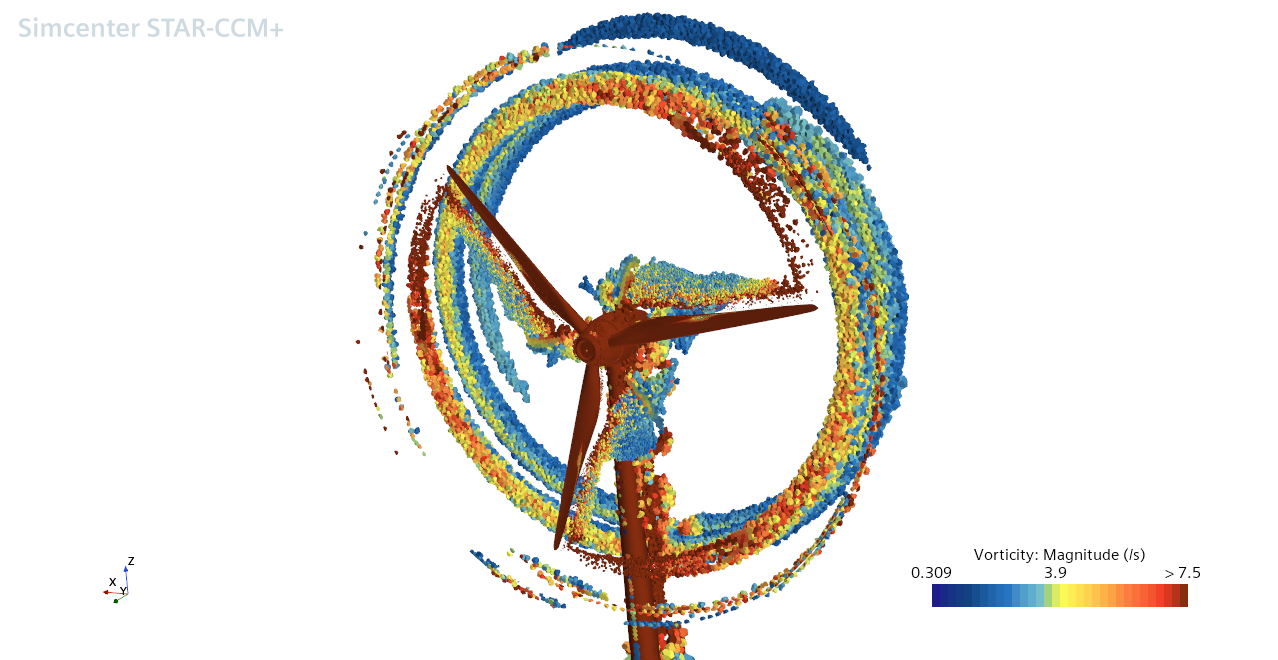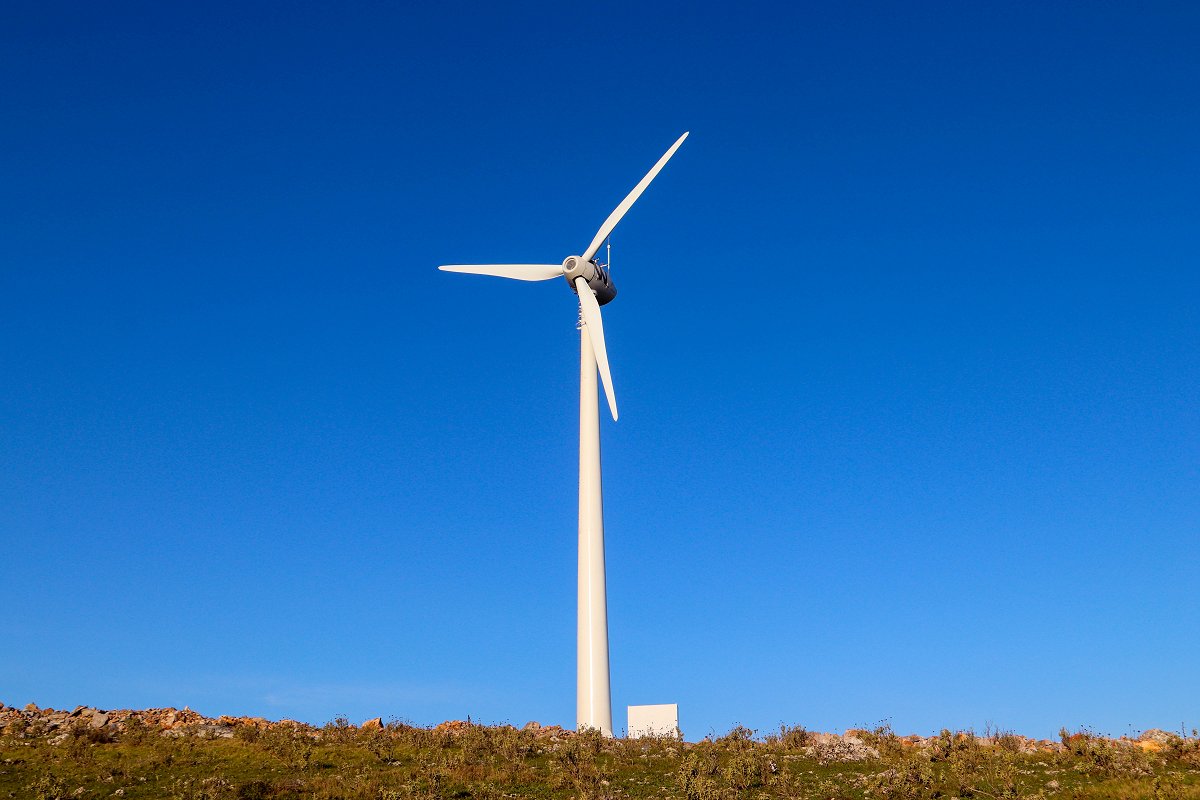High Fidelity Modeling for Small Wind Turbines
The improvement in the performance characteristics of wind turbines is a challenging task, and the need for optimum designs is significantly growing. Computational Fluid Dynamics (CFD) turns out to be a unique tool enabling the optimization of wind turbines during a detailed analysis of the rotors’ blades shape and the tower design aiming to improve the overall efficiency of the structure. This experiment utilized High Fidelity numerical models in order to assess and accurately simulate the aerodynamic performance of small wind turbines under various operational scenarios.
SECTOR: Environment, Energy
TECHNOLOGY USED: HPC, CFD Simulation
COUNTRY: Greece
The challenge
Wind energy is one of the fastest-growing renewable energy sources in the world with a global capacity of over 837 GW in 2022. As the demand for clean energy continues to grow, the wind industry is facing greater pressure to enhance the efficiency and cost-effectiveness of wind turbines. One way to achieve these goals is by reducing the expenses associated with research and development which often include physical testing. The use of high-fidelity numerical models facilitates precise simulation of the aerodynamic performance of wind turbines across a range of operational scenarios. However, the accurate prediction of temporal and spatial scales within the multiscale CFD model requires advanced meshing techniques and high-resolution numerical models. A specific objective of the experiment was to construct a precise numerical model of EUNICE’s EW16 Thetis wind turbine to be used as a tool to enhance its operational efficiency. However, such simulations necessitate significant computational resources and know-how which exceed the computing capacity of EUNICE. FEAC Engineering P.C. was entrusted with addressing the aforementioned challenge by leveraging its extensive knowledge and expertise in the simulation sector. Successfully overcoming this challenge would position the company to capitalize on emerging opportunities in the HPC simulation market, thereby expanding its reach and impact in the field.
The solution
The collaborative partners developed sophisticated CFD simulation models that harnessed the power of High-Performance Computing (HPC) resources. Exploiting the new predictive analysis capabilities leads to multiple turbine performance optimisation possibilities, as described below. In total, about 485,000 CPU hours were used for the simulations. By leveraging HPC infrastructure and adhering to the turbine manufacturer's requirements, the partners were able to gather detailed data on the turbine's operational performance under varying wind speeds. To provide further insights into the turbine's operating environment, satellite data was also utilized to model the terrain and elevation changes at the turbine location which were included in the simulation process. The simulation process of wind turbine aerodynamics entailed the use of highly dense computational meshes consisting of over 50 million cells, a reduced time step approach, and the implementation of the Detached Eddy Simulation method to model complex physical phenomena. The simulation procedure was validated using an experimental data set, significantly reducing the uncertainty associated with the computed results.
Business impact, Social impact, Environmental impact
For EUNICE WIND SA, the material and logistics costs of constructing a new wind turbine solely for testing purposes are approximately €300,000. Replacing those tests with HPC-based CFD simulations to analyze the wind turbine's operation in its actual location reduces costs to only 10-17% of the total expense, depending on the complexity of the HPC calculations. With the simulations optimal settings could be determined and stress on the blades, which are indicative of potential fatigue-related malfunctions, evaluated. Simulation results lead to the potential for reduced costs through predictive maintenance and combined with faster design cycles giving EUNICE a competitive advantage. The simulations conducted during the experiment identified optimal blade pitch angle strategies, leading to a substantial increase in energy yield. By optimizing the turbine's operational settings, EUNICE WIND SA can now generate higher energy output from their wind turbines. This achievement has direct financial implications, as it increases the revenue potential of each turbine and improves the overall profitability of the company's wind energy projects. FEAC Engineering P.C. gained valuable experience in high-fidelity simulations by utilizing large-scale HPC resources. This experience allowed the company to enhance its expertise in the field of numerical simulations and advanced computing and to expand into new markets, like the wind energy sector. Furthermore, the implementation of the novel HPC-based methodology will have a positive social impact, as it leads to the improvement of emerging designs and more advanced wind turbine models that contribute to environmental sustainability and avoid unnecessary waste from non-recyclable composite materials utilized in the test turbines’ construction. This contribution to the “European Green Deal” underlines the importance of the potential benefits of this experiment.
Benefits
• Tests by HPC simulation could reduce the testing costs by up to 83% compared to a typical physical test installation.
• Increased competitiveness with faster design cycles and lower operational expenditure, which leads to higher levelized cost of electricity.
• Assist the European Commission directives towards a green and sustainable future.
Organisations involved:
Technology expert: FEAC Engineering P.C.
End User: EUNICE Wind S.A.
Success Story video




